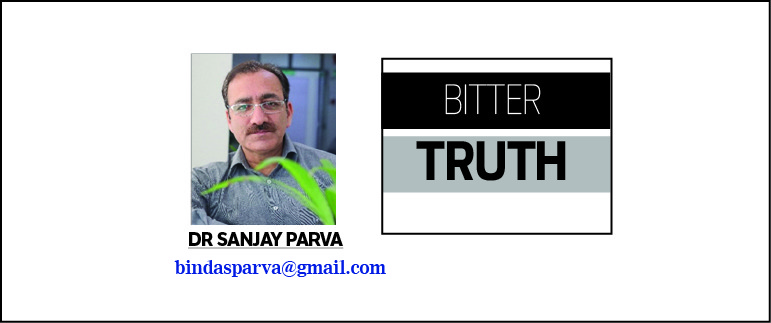
Even in the present era, mathematics is still a vital subject in education and a subject as old as civilization itself. However, there are a lot of myths in this sector that might prevent people from understanding and appreciating the subject. These false beliefs distort not only what mathematics is about but also make it difficult to interact with it productively. To promote a more accurate and fulfilling experience with mathematics, educators and students alike must recognize and overcome these errors.
Common Misconceptions in Mathematics
2.1. Misconception 1: Equation solving is the sole thing algebra is for
The idea that algebra, a foundational subject of mathematics, is only concerned with determining the values of unknowns in equations is one of the most widespread misconceptions. Algebra involves more than just calculating equations; it also involves seeing patterns, thinking abstractly, and creating mathematical models to depict actual circumstances. Algebra can be used, for instance, to simulate financial investments over time or to comprehend the growth rate of bacteria, both of which require a conceptual understanding that goes beyond simple equation solving [1].
2.2. False belief 2: Memorization is the key to mathematics
True mathematical proficiency necessitates an understanding of fundamental concepts and the capacity to apply them in a variety of situations, even though memory plays a part. Think about the Pythagorean theorem. It is not enough to simply know that a2+b2=c2; rather, one must comprehend how this relationship is essential to Euclidean geometry and can be demonstrated graphically by several geometric proofs [2].
2.3. Misconception 3: A problem can only be solved in one right method.
This misperception, which promotes the notion that mathematical exploration is inflexible, can be particularly restrictive. Numerous mathematical problems can be explored and solved in a variety of ways, each providing a distinct set of insights. For example, depending on what makes the most sense to the solver, a single integral in calculus may be solved using u-substitution, integration by parts, or a trigonometric identity [3].
2.4. False belief 4: Only “smart” individuals should do the math.
It is false and harmful to think that mathematical aptitude is a fixed attribute that only a few people possess. Students who have a growth mindset—believing that intelligence can be developed—perform better than those who have a fixed mindset, according to a study on mindset by Carol Dweck [4]. This emphasizes how crucial it is to have faith in one’s ability to get better when it comes to learning outcomes in mathematics.
Misconceptions’ Effect on Learning Mathematics
3.1: Reduced Ability to Solve Problems
Erroneous beliefs may result in a limited perspective on problem-solving, where students may give up instead of exploring other options or coming up with novel solutions when a tried-and-true strategy becomes ineffective. For instance, students may find it difficult to answer a complex algebraic problem if they solely attempt to solve it using linear equations while a graphical method may offer a more understandable solution [5].
3.2. Inadequate capacity for critical thought
Students may overlook the development of critical thinking and reasoning abilities, which are crucial for comprehending and applying mathematical concepts if they feel that mathematics is all about rote memorization. This is demonstrated by the fact that some students learn trigonometry as a list of ratios to commit to memory instead of as connections derived from the geometry of a circle [6].
3.3. Diminished confidence and drive in math
Erroneous assumptions, like the notion that aptitude for mathematics is intrinsic, can erode self-assurance and drive. Mathematical obstacles that seem insurmountable to students might cause them to disengage from learning, which can lead to a cycle of underperformance and avoidance. Studies have indicated that students’ motivation to work on arithmetic problems is highly influenced by their self-perceived ability [7].
Overcoming Myths in the Teaching of Mathematics
4.1. Promoting conceptual comprehension above rote memory
Teacher’s ought to focus on the ‘why’ behind mathematical ideas to develop a deeper comprehension that goes beyond rote memorization of formulas. As evidenced by the APOS theory framework, which supports the creation of mathematical knowledge through stages of action, process, object, and schema [8], this method aids students in applying their knowledge flexibly.
4.2. Encouraging various approaches to problem-solving
Instructors might encourage students to consider several answers by presenting different approaches to problem-solving. In addition to improving problem-solving abilities, this highlights how dynamic and rich mathematics is. To help students grasp concepts more deeply, the National Council of Teachers of Mathematics (NCTM) advises using numerous representations while solving problems [9].
4.3. Encouraging a mathematical growth attitude
Teachers can foster a growth mindset by encouraging the notion that mathematical talents can be developed through practice and effort. This viewpoint promotes tenacity and fortitude when confronted with difficult issues. According to Dweck’s studies, pupils’ performance in mathematics can be considerably improved by rewarding effort above natural aptitude [4].
4.4. Giving mathematical ideas to real-world situations
Making mathematics relevant to everyday life increases the subject’s relatability and interest. It demonstrates that mathematics is a useful instrument for resolving a wide range of real-world issues rather than being merely an abstract discipline. Mathematical concepts can become more relatable and practical through the use of project-based learning that integrates real-life data [10].
In summary
Dispelling these myths about mathematics is a transformative step toward a more inclusive and successful mathematical education, not just an academic one. We may encourage the next generation to approach mathematics with interest, confidence, and a sincere want to learn by creating an atmosphere where the subject is viewed as approachable, multifaceted, and intricately linked to the world we live in.
The writer is a member of Faculty of Mathematics, Department of General Education SUC, Sharjah, UAE. Email: reyaz56@gmail.com




